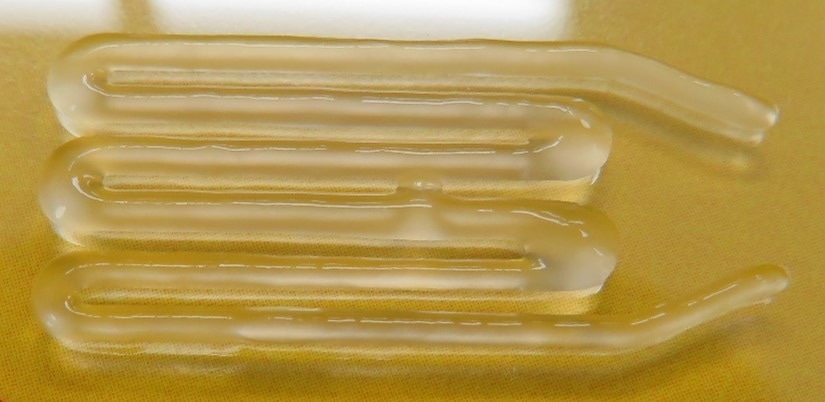For 3D bioprinting applications, TissueFab® bioink (GelAlg)ma-Vis/405 nm is an alginate methacrylate-based bioink. The formulation works well with extrusion-based 3D bioprinters for printing tissues and structures in three dimensions. Without using any supporting material, the bioink can be utilized to bioprint hydrogels that are filled with cells in the required form.
Printed objects can be crosslinked in a single step using photocrosslinking mediated by visible light. Applications for this bioink include tissue engineering, regenerative medicine, and 3D cell culture.
Alginate and gelatin, two organic polymers, are the source of this bioink. Alginate is often called sodium alginate or alginic acid, a natural biopolymer derived from brown algae. A common natural polysaccharide utilized in tissue engineering is alginate.
Gelatin includes bioactive peptide sequences comparable to those in the native extracellular matrix, which encourages integrin-mediated cell adhesion and MMP-sensitive enzymatic breakdown, both of which are necessary for cellular activities such as migration, proliferation, and differentiation.

Image Credit: Merck
Properties
Source: Merck
| . |
. |
| Quality Level |
100 |
| Description |
Suitable for 3D bioprinting applications |
| Sterility |
Sterile-filtered |
| Form |
Viscous liquid (or gel) |
| Impurities |
≤5 CFU/g Bioburden (Fungal)
≤5 CFU/g Bioburden (Total Aerobic) |
| Color |
Colorless to pale yellow |
| Particle size |
0.2 μm |
| pH |
6.5-7.5 |
| Application(s) |
3D bioprinting |
| Storage temp. |
2-8 °C |
Packaging
10 mL in a glass bottle
Benefits
- High printing fidelity and cell viability ready-to-use formulation that skips the time-consuming bioink formulation development procedure
- Contains comprehensive instructions
- Appropriate for various extrusion-based 3D bioprinter devices